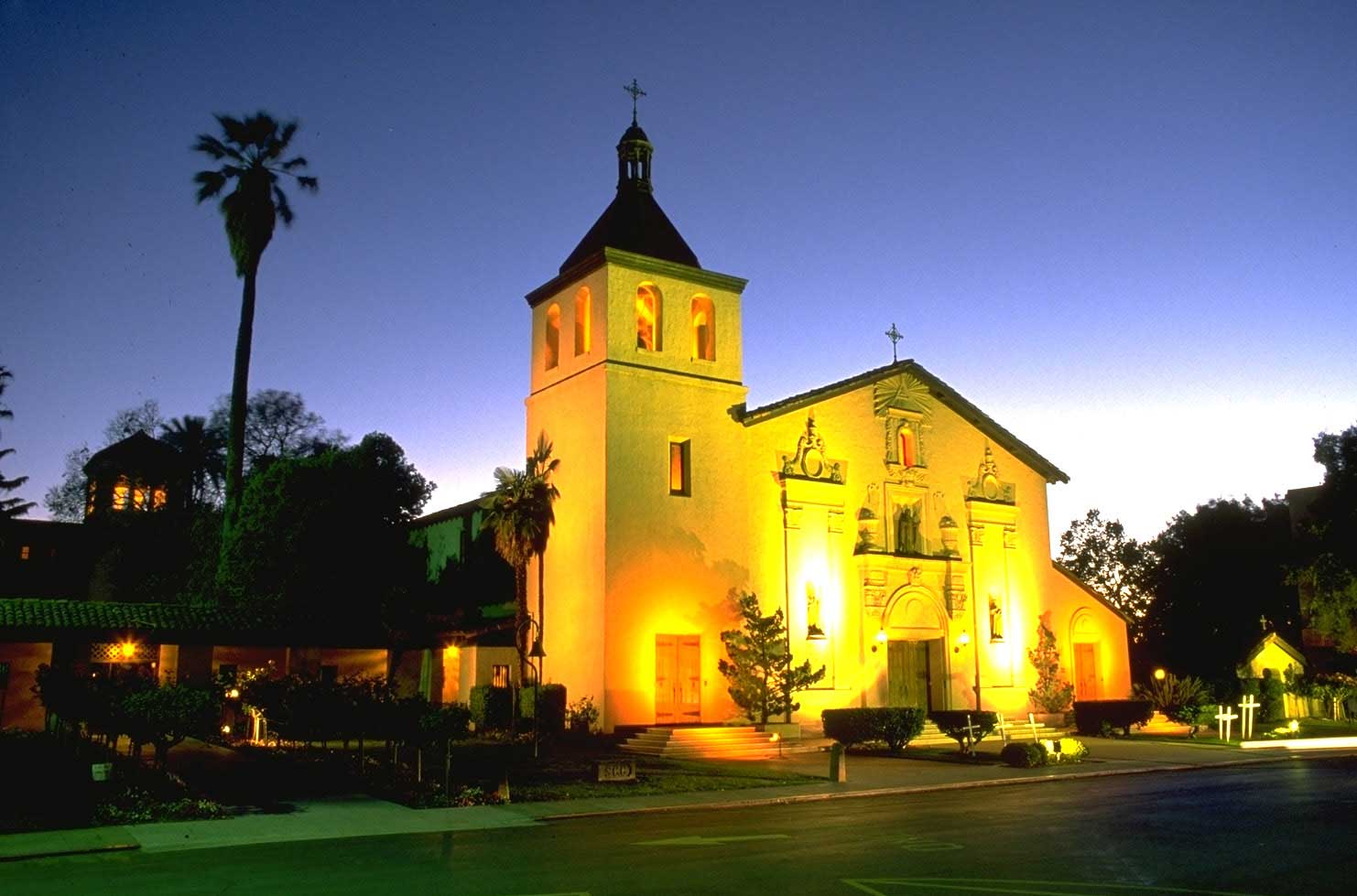


|
Second Annual IEEE Communications Society Conference on
Sensor and Ad Hoc Communications and Networks Santa Clara, California, USA26-29 September 2005 |

|



|
Second Annual IEEE Communications Society Conference on
Sensor and Ad Hoc Communications and Networks Santa Clara, California, USA26-29 September 2005 |

|
T1 - Security in Wireless Sensor Networks
Radha Poovendran, University of Washington.
Duration: Half Day - Morning (9:00am - 12:30pm)
T2 - EmStar: Sensor Networks Design, Simulation, Emulation and Deployment
Richard Guy, Lewis Girod, University of California, Los Angeles.
Duration: Half Day - Afternoon (1:30pm - 5:00pm)
T3 - Mote Software Development for Wireless Sensor Networks
Tim Reilly and Shana Jacob, Crossbow Technology, Inc.
Duration: Full Day (9:00am - 5:00pm)
T4 - Wireless Sensor Networks
Ian F. Akyildiz, Georgia Institute of Technology, USA
Duration: Full Day (9:00am - 5:00pm)
Andreas Savvides, Yale University, andreas.savvides@yale.edu
Cedric Westphal, Nokia Research Center, cedric.westphal@nokia.com
T1 - Security in Wireless Sensor Networks
Instructor: Radha Poovendran, University of Washington.
Duration: Half-day, Morning (9:00am - 12:30pm)
Description:
As we deploy and rely on wireless sensor networks for monitoring, data gathering, collaborative communication and computing, these networks must be able to provide authentic information that is timely. While the wireless networks and their flexibility to form ad hoc networks with minimal or no prior infrastructure is desirable, the wireless medium is also vulnerable to unwanted eavesdropping, and other attacks such as wormholes. Such attacks have no counter part in wired networks. Moreover, due to resource-constraints of the wireless medium, solutions that have been developed for wired networks are often not applicable. This half-day tutorial is aimed at presenting the background security properties that are often needed in sensor network applications, currently actively researched problems, and emerging research problems of interest.
Topics to be covered:
A. Background: Typical characteristics of a sensor node and resource constraints. Examples of threats in sensor networks in sensing and communicating modes. Incomplete list of different attacks (attacks that are specific to the resource-constraints, attacks that are due to ad hoc nature of the networks, attacks that are due to the use of antennas) on sensor networks that are specific to the sensor and ad hoc networks. Basic cryptographic primitives, including encryption, authentication, hashing, signatures and attacks they can prevent.
B. Security of Network Functions: Secure network initialization problem, challenges in bootstrapping security, secure neighbor discovery, single and multihop route establishment, establishing local broadcast, broadcast authentication, cross-layer approaches in key management, probabilistic, and threshold-based key management problems. Secure routing protocols and attacks against them. Incorporating performance metrics related to resource-constraints of the sensor nodes. Covert channels in ad hoc network protocols.
C. Security of Sensor Network Applications: Secure data aggregation problem, current approaches, and open challenges; secure location estimation location claim problem, current approaches, and open challenges, Location privacy problem, current approaches, and emerging problems. Time synchronization problem, current approaches, and open challenges.
Audience:
This tutorial is intended for researchers, and industry professionals who are interested in the emerging area of sensor network security. It is also intended for those who have been working in the area of communications and networking aspects of sensor networks but would like to expand into sensor security. Basic background in security will be useful.
Biography:
Radha Poovendran received his PhD. in electrical engineering from the University of Maryland, College Park in 1999. He has been an assistant professor at the University of Washington since September 2000. His research interests are in applied cryptography for wireless networks, and multiuser security. For his research contributions to multiuser security in wired and wireless networks, he has received NSF CAREER (2001), ARO Young Investigator Award (2002), ONR Young Investigator Award (2004), and Presidential Early Career Award (2005). He serves on several program committees related to wireless and sensor network security, and is a co-chair of the ACM Wireless Security (WiSe) 2005, to be held on September 2nd, in Cologne, Germany.
T2 - EmStar: Sensor Networks Design, Simulation, Emulation and Deployment.
Instructors: Richard Guy, Lewis Girod, University of California, Los Angeles.
Duration: Half-Day Tutorial, Afternoon (1:30pm - 5:00pm)
The goal of this tutorial is to introduce attendees to the Emstar sensor network design, simulation, emulation, and deployment system for hierarchical sensor networks. At the end of the 1/2 day, attendees will have successfully used an example sensor network application in simulation, emulation and deployment modes, with both simulated and real sensors (temp), motes (Mica2), and microservers (stargate).
The plan is to intermingle lecture with hands-on; we can bring along an appropriate number of toys, for groups of 2-4 attendees each.
Here is an early draft outline:
Biography:
Richard Guy and Lewis Girod are with the Center for Embedded Networked Systems, at the
University of California, Los Angeles.
T3 - Mote Software Development for Wireless Sensor Networks
Speaker(s): Tim Reilly, Xin Yang and Shana Jacob, Crossbow Technology, Inc.
Duration: Full Day (9:00AM - 5:00PM)
Description:
This tutorial presents the core concepts of TinyOS and
the nesC language for developing Mote software. Motes are a wireless
sensor platform that can be used in a variety of monitoring and control,
tracking, and pervasive computing applications. Participants will be
introduced to sensory systems software. In addition and enable them with
wireless communications and multihop mesh networking.
A Windows laptop/notebook PC and MICA Mote hardware are required for this tutorial. The MICA^T platform is widely used in industry for commercial systems and in academia for experiment and research. If you don't have any Motes, you may purchase a MOTE-KIT from Crossbow prior to the tutorial or before the start of the session. Only a limited number of MOTE-KITs will be provided for complementary in-class use.
In order to maximize the tutorial time for presenting the Mote platform and TinyOS concepts, participants are required to have the TinyOS programming environment installed prior to the tutorial. Details on how to install the programming environment is included within the MOTE-KIT. Email and phone support for installing the programming environment is readily available from Crossbow prior to the tutorial.
Introduction to the MICA Mote Platforms and Sensory Systems
Basic Concepts of TinyOS and nesC
Advanced Concepts of TinyOS
Sensor Application Development
Wireless Communication and Multihop Mesh Networking
Biography:
Tim Reilly has been full time with Crossbow since January 2005 in the role of Applications Engineer. Previous to this he was a Crossbow Solution Provider. Tim has a B.Sc. in Computer Science from the University of Western Ontario and brings with him an extensive professional software engineering background spanning over 16 years. His professional experience includes positions with Honeywell (SACDA), IBM and was also a pioneer in the early days of the Internet. Tim's application domain experience includes simulation, process control, web technologies and solid IT skills including RDBMS data modeling and object oriented design & programming. Tim also has a background in electronics and has been involved with Mote based Wireless Sensor Technology and writing TinyOS/nesC code since early 2003.
Xin Yang is an embedded software engineer at Crossbow Technology, Inc. His education includes a B.S. in Computer Science and Applied Math from UC Berkeley. He was involved in Demand Response and Sensor Network research during his time in Berkeley. Currently he is working on MAC layer protocols.
Shana Jacob has been with Crossbow since 2002 as a Sales Engineer and Account Manager. She works with university customers worldwide who use Crossbow's wide selection of wireless sensing products. Shana also manages sales for Crossbow's accelerometer and tilt sensor product lines. She graduated from UC Davis in 2002.
T4 - Wireless Sensor Networks
Speaker(s): Ian F. Akyildiz, Georgia Institute of Technology, USA
Duration: Full Day (9:00AM - 5:00PM)
Description:
The technological advances in the micro-electro-mechanical
systems and the wireless communications have enabled the deployment of the
small intelligent sensor nodes at homes, in workplaces, supermarkets,
plantations, oceans, streets, and highways to monitor the environment. The
realization of smart environments to improve the efficiency of nearly
every aspect of our daily lives by enhancing the human-to-physical world
interaction is one of the most exciting potential sensor network
applications utilizing these intelligent sensor nodes. However, this
objective necessitates the efficient and application specific
communication protocols to assure the reliable communication of the sensed
event features and hence enable the required actions to be taken by the
actors in the smart environment. In this tutorial, the challenges and the
existing solutions for the design and development of sensor/actor network
communication protocols are presented. More specifically, application
layer, transport layer, network layer, data link layer, in particular,
error control and MAC protocols, and physical layer issues as well as the
localization protocols and the time synchronization algorithms are
explained in detail. Open research issues for the realization of sensor
and actor networks are also discussed. The overall objective of this
tutorial is to provide a global and detailed view at the current
state-of-the-art in WSNs/WSANs and present the still-open research issues
in this field. The topics covered include:
The intended audience includes faculty, engineers, end users, and students, interested in sensor networks. Prerequisite is the basic computer networking knowledge.
Biography:
Ian F. Akyildiz received his BS, MS, and PhD degrees in Computer
Engineering from the University of Erlangen-Nuernberg, Germany, in 1978,
1981 and 1984, respectively. Currently, he is the Ken Byers Distinguished
Chair Professor with the School of Electrical and Computer Engineering,
Georgia Institute of Technology and Director of Broadband and Wireless
Networking Laboratory. He is an Editor-in-Chief of Computer Networks
(Elsevier) and of Ad Hoc Networks (Elsevier) Journal. Dr. Akyildiz is an
IEEE fellow (1995), an ACM fellow (1996). He served as a National Lecturer
for ACM from 1989 until 1998 and received the ACM Outstanding
Distinguished Lecturer Award for 1994. Dr. Akyildiz received the 1997 IEEE
Leonard G. Abraham Prize award (IEEE Communications Society) for his paper
entitled "Multimedia Group Synchronization Protocols for Integrated
Services Architectures" published in the IEEE Journal of Selected Areas in
Communications (JSAC) in January 1996; the 2002 IEEE Harry M. Goode
Memorial award (IEEE Computer Society) with the citation "for significant
and pioneering contributions to advanced architectures and protocols for
wireless and satellite networking"; the 2003 IEEE Best Tutorial Award
(IEEE Communicaton Society) for his paper entitled "A Survey on Sensor
Networks", published in IEEE Communication Magazine, in August 2002; and
the 2003 ACM SIGMOBILE award for his significant contributions to mobile
computing and wireless networking. His current research interests are in
Sensor Networks, InterPlaNetary Internet, and Wireless Networks.